Abstract
The role of reactive nitrogen intermediates (RNI) in the antimicrobial activities of neutrophils from various mammalian species is unclear. However, it has been reported that rodent neutrophils possess the inducible form of nitric oxide synthase and that inflammatory neutrophils from rats produce potentially antimicrobial levels of RNI. In the present study, neutrophils from humans, rats and mice were evaluated for production of nitrite, a stable end-product of RNI. Human neutrophil preparations (> 95% neutrophils) isolated from peripheral blood were stimulated for 2-24 hr with agents known to trigger the Ca(2+)-dependent constitutive nitric oxide synthase, or to stimulate synthesis of the inducible nitric oxide synthase. Superoxide dismutase was added to some cultures to decrease the levels of superoxide, a compound reported to react with RNI and yield products other than nitrite. Even though the cells were viable and responsive to stimuli, they did not produce nitrite concentrations indicative of antimicrobial potential. Preparations of inflammatory (casein-elicited) mouse neutrophils also failed to produce high concentrations of nitrite. Inflammatory rat neutrophils (2.5 x 10(6)/ml) produced nitrite concentrations of approximately 40 microM in 24-hr cultures, but plots of nitrite production versus cell number for neutrophil and macrophage preparations indicated that contaminating macrophages could account for all the nitrite production in the neutrophil preparations. Thus, neutrophils from rats, mice and humans seem comparable in their inability to produce high levels of nitrite in response to a variety of stimuli. This suggests that in most circumstances the constitutive nitric oxide synthase known to be present in these cells is limited to the production of low levels of nitric oxide for intercellular signalling. In addition, this raises questions about the presence or functional status of inducible nitric oxide synthase in rodent neutrophils.
Full text
PDF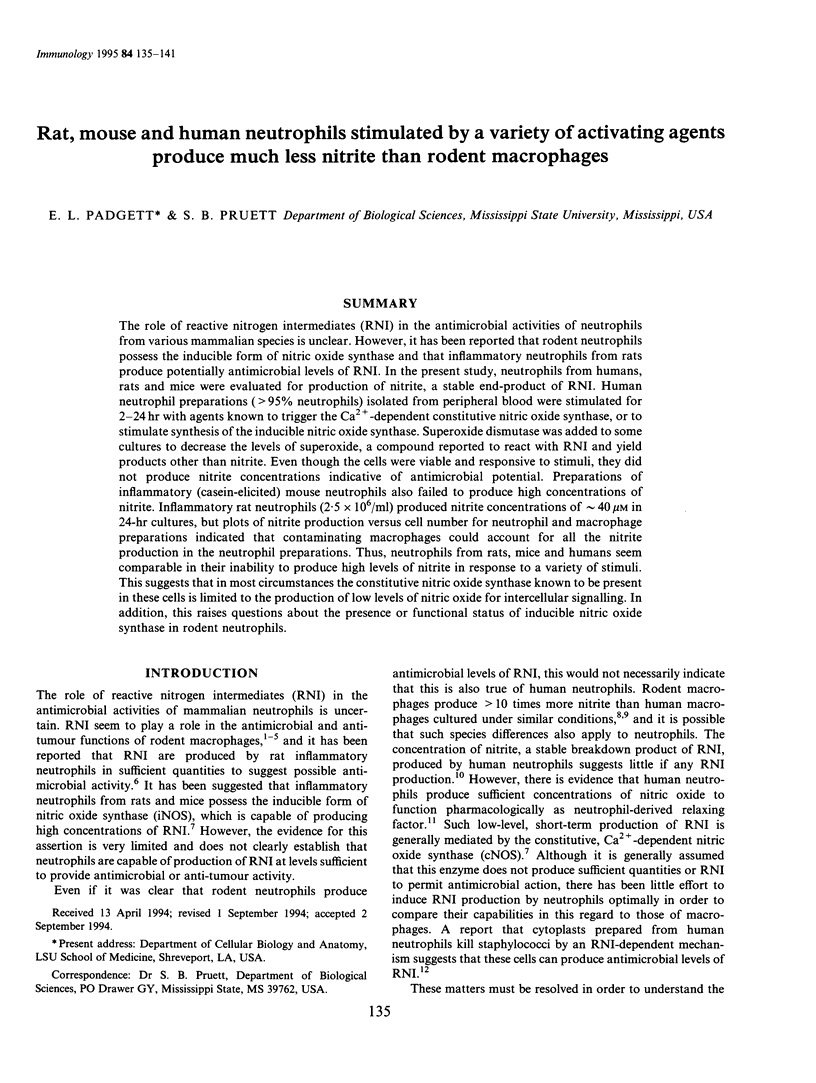
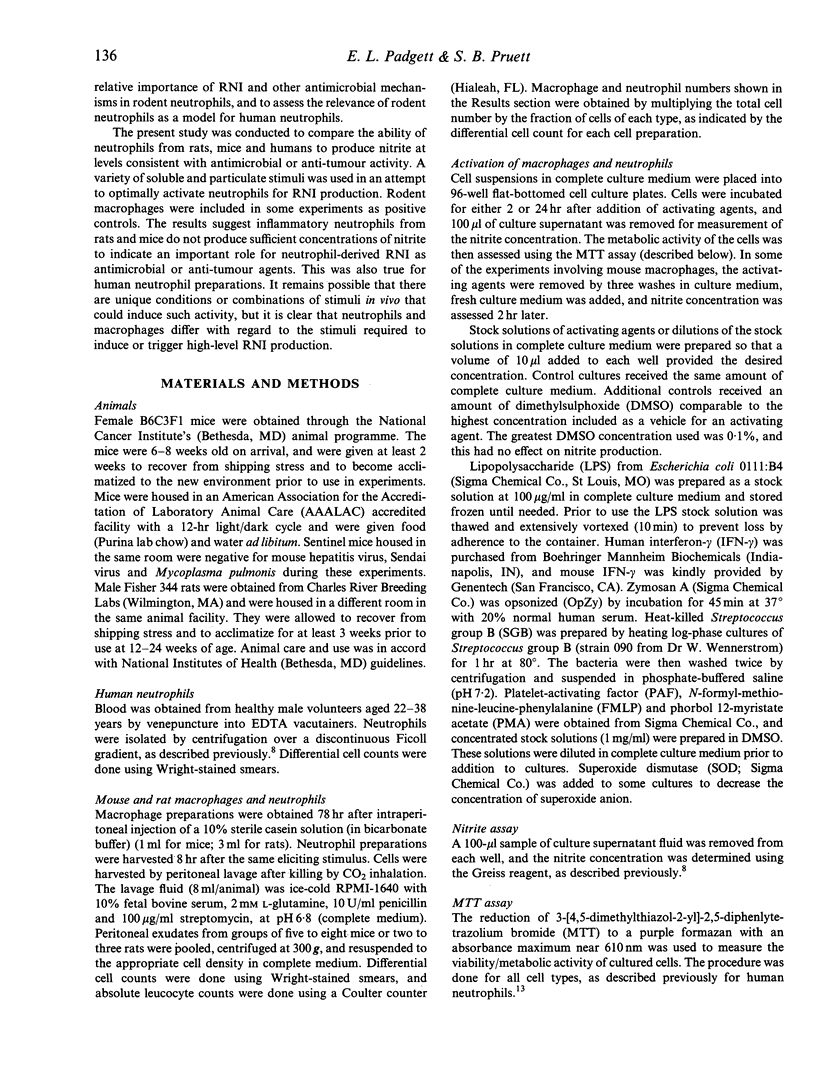
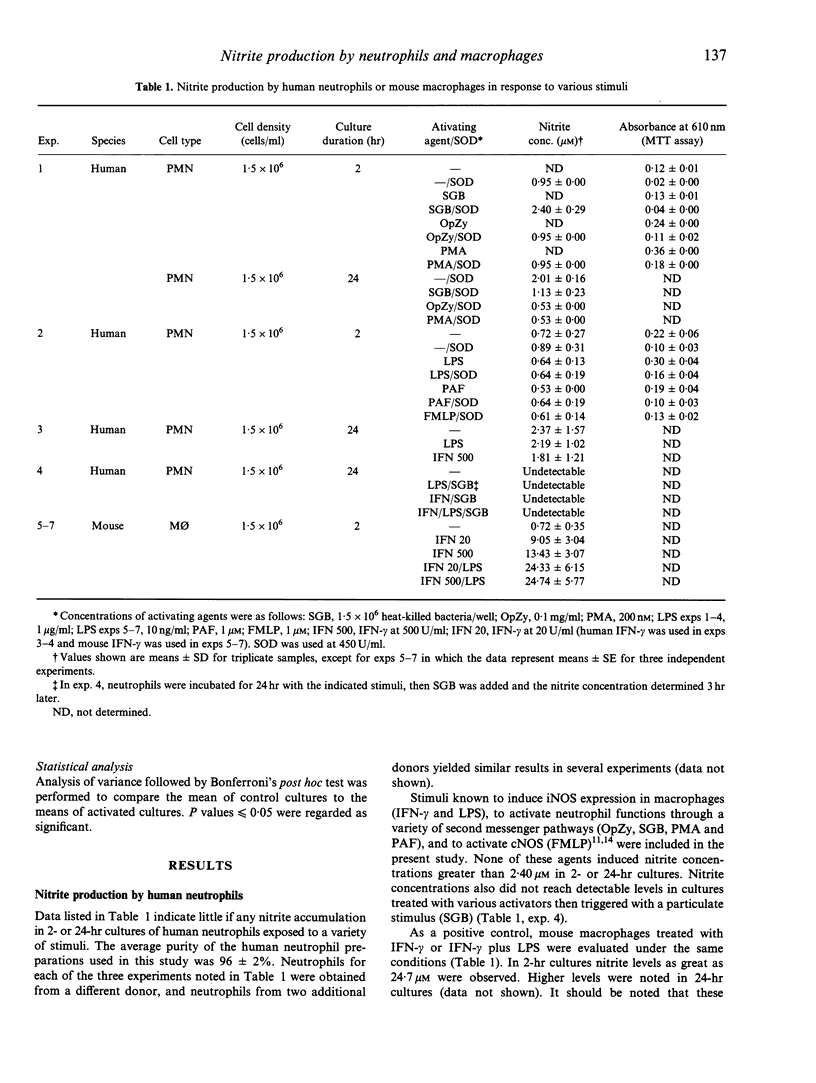
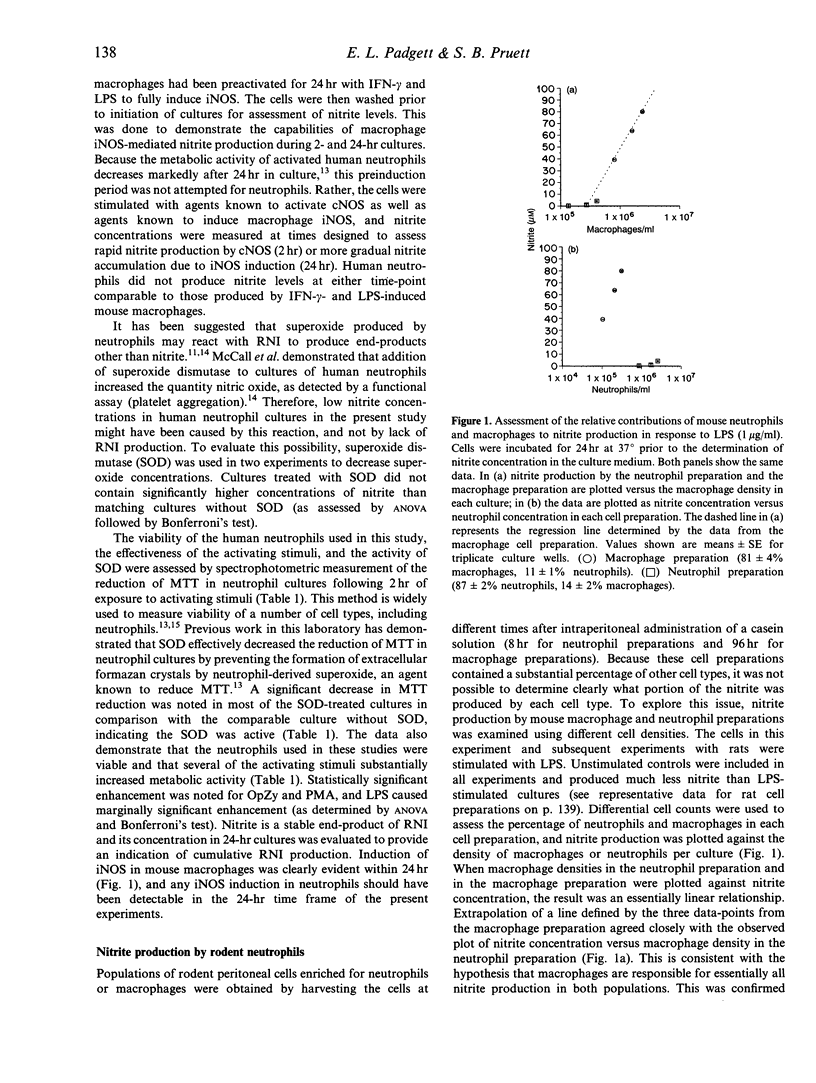
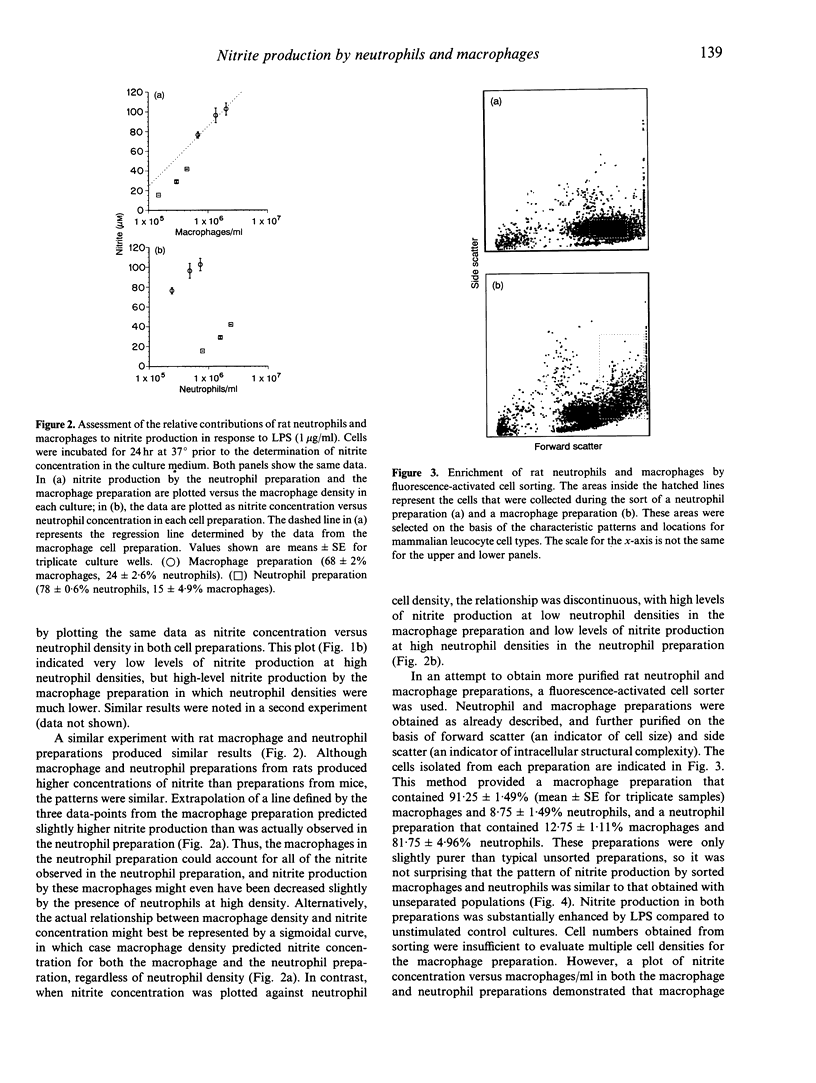
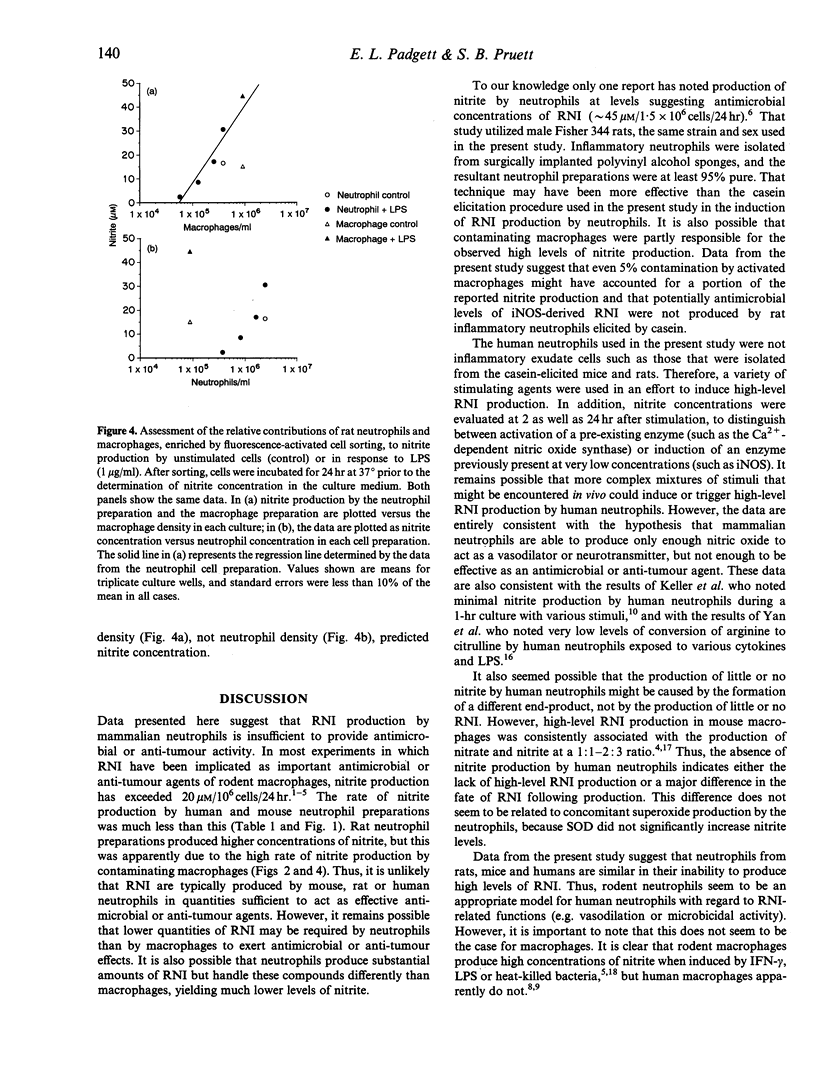
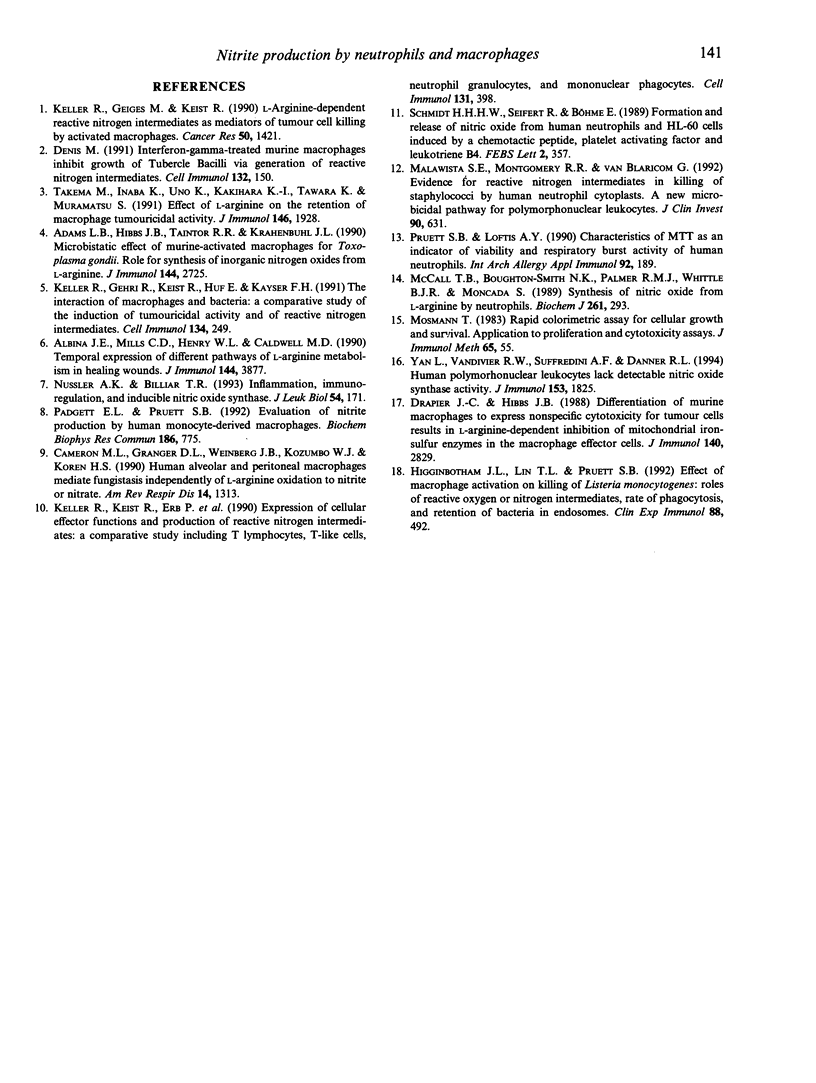
Selected References
These references are in PubMed. This may not be the complete list of references from this article.
- Adams L. B., Hibbs J. B., Jr, Taintor R. R., Krahenbuhl J. L. Microbiostatic effect of murine-activated macrophages for Toxoplasma gondii. Role for synthesis of inorganic nitrogen oxides from L-arginine. J Immunol. 1990 Apr 1;144(7):2725–2729. [PubMed] [Google Scholar]
- Albina J. E., Mills C. D., Henry W. L., Jr, Caldwell M. D. Temporal expression of different pathways of 1-arginine metabolism in healing wounds. J Immunol. 1990 May 15;144(10):3877–3880. [PubMed] [Google Scholar]
- Cameron M. L., Granger D. L., Weinberg J. B., Kozumbo W. J., Koren H. S. Human alveolar and peritoneal macrophages mediate fungistasis independently of L-arginine oxidation to nitrite or nitrate. Am Rev Respir Dis. 1990 Dec;142(6 Pt 1):1313–1319. doi: 10.1164/ajrccm/142.6_Pt_1.1313. [DOI] [PubMed] [Google Scholar]
- Denis M. Interferon-gamma-treated murine macrophages inhibit growth of tubercle bacilli via the generation of reactive nitrogen intermediates. Cell Immunol. 1991 Jan;132(1):150–157. doi: 10.1016/0008-8749(91)90014-3. [DOI] [PubMed] [Google Scholar]
- Drapier J. C., Hibbs J. B., Jr Differentiation of murine macrophages to express nonspecific cytotoxicity for tumor cells results in L-arginine-dependent inhibition of mitochondrial iron-sulfur enzymes in the macrophage effector cells. J Immunol. 1988 Apr 15;140(8):2829–2838. [PubMed] [Google Scholar]
- Higginbotham J. N., Lin T. L., Pruett S. B. Effect of macrophage activation on killing of Listeria monocytogenes. Roles of reactive oxygen or nitrogen intermediates, rate of phagocytosis, and retention of bacteria in endosomes. Clin Exp Immunol. 1992 Jun;88(3):492–498. doi: 10.1111/j.1365-2249.1992.tb06477.x. [DOI] [PMC free article] [PubMed] [Google Scholar]
- Keller R., Gehri R., Keist R., Huf E., Kayser F. H. The interaction of macrophages and bacteria: a comparative study of the induction of tumoricidal activity and of reactive nitrogen intermediates. Cell Immunol. 1991 Apr 15;134(1):249–256. doi: 10.1016/0008-8749(91)90348-f. [DOI] [PubMed] [Google Scholar]
- Keller R., Geiges M., Keist R. L-arginine-dependent reactive nitrogen intermediates as mediators of tumor cell killing by activated macrophages. Cancer Res. 1990 Mar 1;50(5):1421–1425. [PubMed] [Google Scholar]
- Keller R., Keist R., Erb P., Aebischer T., De Libero G., Balzer M., Groscurth P., Keller H. U. Expression of cellular effector functions and production of reactive nitrogen intermediates: a comparative study including T lymphocytes, T-like cells, neutrophil granulocytes, and mononuclear phagocytes. Cell Immunol. 1990 Dec;131(2):398–403. doi: 10.1016/0008-8749(90)90264-r. [DOI] [PubMed] [Google Scholar]
- Malawista S. E., Montgomery R. R., van Blaricom G. Evidence for reactive nitrogen intermediates in killing of staphylococci by human neutrophil cytoplasts. A new microbicidal pathway for polymorphonuclear leukocytes. J Clin Invest. 1992 Aug;90(2):631–636. doi: 10.1172/JCI115903. [DOI] [PMC free article] [PubMed] [Google Scholar]
- McCall T. B., Boughton-Smith N. K., Palmer R. M., Whittle B. J., Moncada S. Synthesis of nitric oxide from L-arginine by neutrophils. Release and interaction with superoxide anion. Biochem J. 1989 Jul 1;261(1):293–296. doi: 10.1042/bj2610293. [DOI] [PMC free article] [PubMed] [Google Scholar]
- Nussler A. K., Billiar T. R. Inflammation, immunoregulation, and inducible nitric oxide synthase. J Leukoc Biol. 1993 Aug;54(2):171–178. [PubMed] [Google Scholar]
- Padgett E. L., Pruett S. B. Evaluation of nitrite production by human monocyte-derived macrophages. Biochem Biophys Res Commun. 1992 Jul 31;186(2):775–781. doi: 10.1016/0006-291x(92)90813-z. [DOI] [PubMed] [Google Scholar]
- Schmidt H. H., Seifert R., Böhme E. Formation and release of nitric oxide from human neutrophils and HL-60 cells induced by a chemotactic peptide, platelet activating factor and leukotriene B4. FEBS Lett. 1989 Feb 27;244(2):357–360. doi: 10.1016/0014-5793(89)80562-9. [DOI] [PubMed] [Google Scholar]
- Takema M., Inaba K., Uno K., Kakihara K., Tawara K., Muramatsu S. Effect of L-arginine on the retention of macrophage tumoricidal activity. J Immunol. 1991 Mar 15;146(6):1928–1933. [PubMed] [Google Scholar]
- Yan L., Vandivier R. W., Suffredini A. F., Danner R. L. Human polymorphonuclear leukocytes lack detectable nitric oxide synthase activity. J Immunol. 1994 Aug 15;153(4):1825–1834. [PubMed] [Google Scholar]


